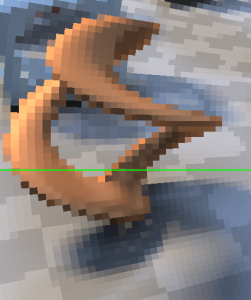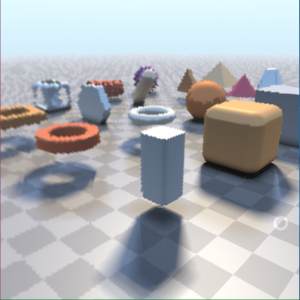Research:
- Read the three papers and decide whether they are related to FR (Not directly, but there are many techniques which could be used to accelarate rendering)
- [He, Extending, 2014]: The idea is totally the same with that of coarse pixel shading. But this is an approach for forward shading.
- [Yee, Spatiotemporal, 2001]: Accelerate global illumination computation for dynamic environments. Use human visual system property.
- [Liktor, Decoupled Deferred, 2012]:
- compact geometry buffer: stores shading samples independently from the visibility
- [ClarBerg, AMFS, 2014]: powerful hardware architecture for pixel shading, which enables flexible control of shading rates and automatic shading reuse between triangles in tessellated primitives.
- [Foveated Real-Time Ray Tracing for Virtual Reality Headset]
- foveated sampling
- [Combining Eye Tracking with Optimizations for Lens Astigmatism in modern wide-angle HMDs]
- Foveated sampling: taking the minimum values of two sampling maps (lens astigmatism & current eye gaze) in the foveated region.
- [Perception-driven Accelerated Rendering, 2016]
- survey
- [A Retina-Based Perceptually Lossless Limit and a Gaussian Foveation Scheme With Loss Control, 2014]:
- not related to foveated rendering
- [User, Metric, and Computational Evaluation of Foveated Rendering Methods]
- [H. Tong and R. Fisher. Progress Report on an Eye-Slaved Area-of Interest Visual Display. Defense Technical Information Center, 1984.]
- [Proceedings of the 1990 Symposium on Interactive 3D Graphics]
- Mutlisampling & Supersampling
- Multisampling: only apply super samples at the edge of primitives
- Supersampling: sample for the whole frame and amplify the whole frame
- Forward rendering & deferred rendering
- https://gamedevelopment.tutsplus.com/articles/forward-rendering-vs-deferred-rendering–gamedev-12342
- Deferred shading seems good, why not giving up forward shading?
- User, Metric, and Computational Evaluation of Foveated Rendering Methods
- Compare 4 foveated rendering methods
- Lower resolution for foveated view
- Screen-Space Ambient Occlusion instead of global ambient occlusion
- Terrain Tessellation
- Foveated Real-time Ray-Casting
- Provide foveated image metric
- HDR-VDP: compare two images and get visibility and quality
- Only spacial artifacts are considered! Temporal is not considered!
- Find a saliency map during free viewing.
- Compare 4 foveated rendering methods

